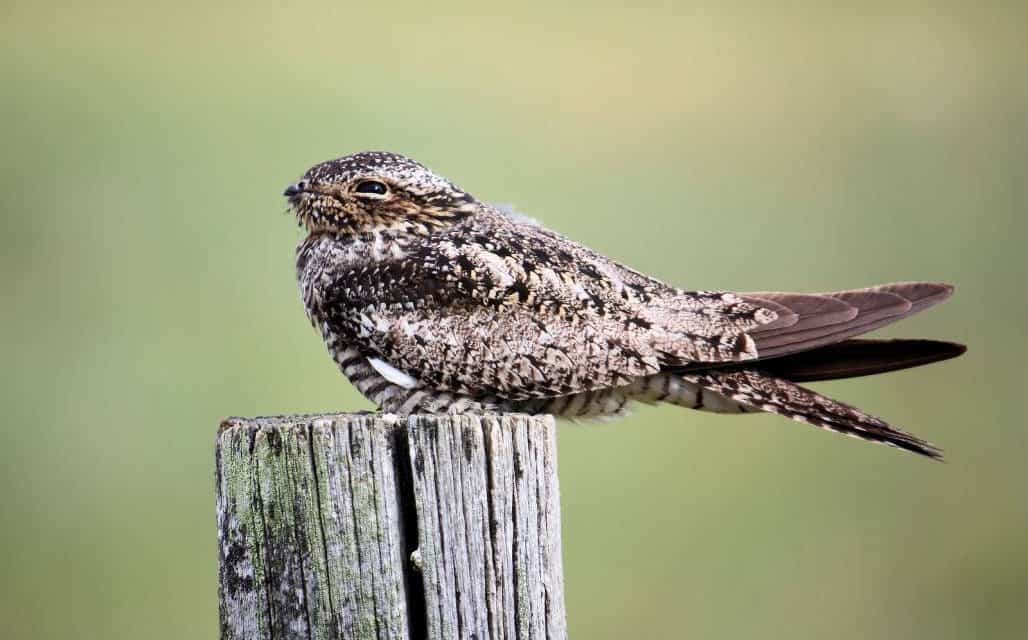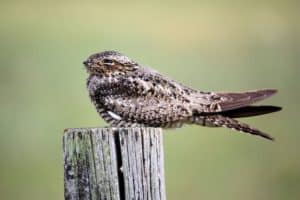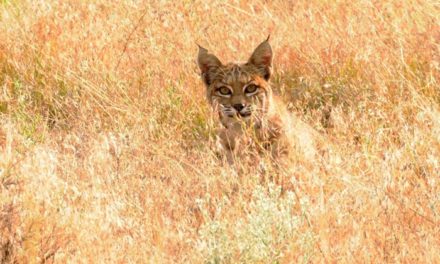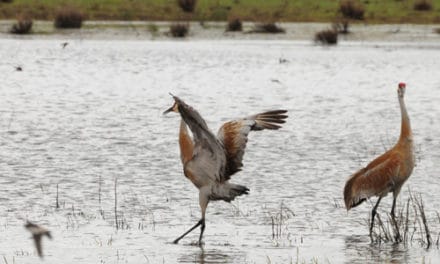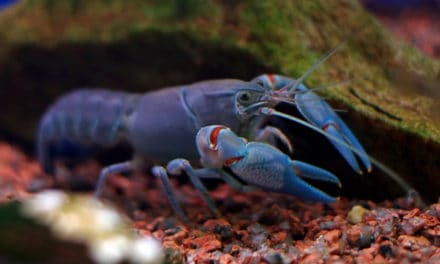By Melissa Wynn
The Common Poorwill is the smallest of the “nightjars” in North America, and is considered the western counterpart of the eastern Whip-poor-will. The Hopi name for the Common Poorwill means “the sleeping one”, as they are the only bird known to hibernate.In cold weather, they enter a hibernating state, called tupor, with a lowered body temperature, heartbeat, and rate of breathing. Hummingbirds also enter into tupor but only for short periods. The heartier Poorwill can stay in tupor for weeks.
Hibernation is not the Common Poorwill’s only odd characteristic. They also have whiskers, that’s right whiskers. Like an odd mustache on either side of their tiny beak. This not quite birdlike feature adds to Poorwill’s odd look. Feet so tiny that they are rarely seen are another Common Poorwill trait that makes one cock their head and wonder.
These well-camouflaged cousins of the also whiskered Whip-poor-will are brownish gray and mottled with a white ring around the base of the neck. This coloring makes them hard to spot, but a beautiful song means they are often heard, especially near dusk and dawn.
Dry, open, grassy or shrubby areas are where our strange feathered friends call home. Lovely Autumn is when all share in the rare sightings as a few are still toughing it out in the higher elevations. Meanwhile, others are moving lower toward the Great Basin and foothills. It takes a sharp eye to get a glimpse of the Poorwill as they sing their twilight serenades.
The Common Poorwill feeds exclusively on night flying insects such as moths and nocturnal flying beetles. They preserve energy by watching from a perch and then ambushing their prey and it flies by. A quick flutter and a snap of their beak and the first course is over.
Keep yours eyes peeled and your binoculars handy so that if you hear their distinctive, high pitched, two whistle call maybe, just maybe you can get a look at the strange and interesting Common Poorwill.
photo: bigstockphoto.com
facts courtesy of sdakotabirds.com and allaboutbirds.org

